Celestron Labs CB2000C Handleiding
Celestron
Miscroscoop
Labs CB2000C
Bekijk gratis de handleiding van Celestron Labs CB2000C (8 pagina’s), behorend tot de categorie Miscroscoop. Deze gids werd als nuttig beoordeeld door 48 mensen en kreeg gemiddeld 4.7 sterren uit 24.5 reviews. Heb je een vraag over Celestron Labs CB2000C of wil je andere gebruikers van dit product iets vragen? Stel een vraag
Pagina 1/8

1
2
4
5
6
7
8
3
9
10
11
12
13
15
14
16
17
18
19
English
Congratulations on your Celestron Labs
microscope purchase. Your new Celestron
Labs microscope is a precision optical
instrument, made of the highest quality
materials to ensure durability and long
life. It is designed to give you a lifetime of
enjoyment with minimal maintenance.
This CB2000C microscope provides powers
from 40x up to 2000x. It is ideally suited
for examining specimen slides of yeasts
and molds, cultures, plant and animal parts,
fibers, bacteria, and more.
Before attempting to use your Celestron
Labs microscope, please read these
instructions to familiarize yourself with
the parts and functions of the microscope.
Refer to the microscope diagrams to locate
the parts discussed in the manual. The final
section of the manual provides simple care
and maintenance tips.
IN THE BOX
- Microscope CB2000C
- 4 objective lenses: 4x, 10x, 40x (spring-
loaded), 100x (spring-loaded)
- 2 sets of wide field eyepieces: (2) 10x with
pointer, (2) 20x
- 10 prepared slides
- 3 colored filters
- Immersion oil
- Replacement bulb
- Replacement fuse
- Power cord
- Trinocular eyepiece tube
PARTS
1. Eyepiece
2. Objective Lenses
3. Stage Holder Clamp
4. Mechanical Stage
5. Abbe Condenser
6. Abbe Adjustment Knob
7. Illuminator
8. Base
9. Diopter
10. Binocular Head
11. Head Locking Screw
12. Nosepiece
13. Arm
14. Coaxial Focus Knob
15. Iris Diaphragm
16. Limit Stop Lock
17. Stage Control Knobs
18. Illuminator Adjustment Wheel
19. Power Switch
SPECIFICATIONS
STAGE: Stage Mechanical stage - 5.5 in x
5.5 in (140 mm x 140 mm)
HEAD: Binocular with 45° incline
MAGNIFICATION Range: 40x to 2000x
FOCUSER: Coaxial, coarse/fine focus knob
OBJECTIVES: Achromatic 4x, 10x, 40x, 100x
EYEPIECES: WF 10x with pointer, WF 20x
NOSEPIECE: Quadruple with click stop
ILLUMINAT OR: Halogen, adjustable
CONDENSER: Abbe N.A. 1.25
DIAPH RAGM: Iris
DIMENSIONS: 9.75 in x 7.30 in x 14.25 in
(24.76 cm x 18.5 cm x
36.20 cm)
WEIGHT: 12 lbs 30 oz / 5.53 kgs
MAGNIFICATION TABLE
Use the following table to determine
magnification using your microscope’s
different eyepiece/objective lens
combinations.
OBJECTIVE LENS: 4x 10x 40x 100x
WF 10X EYEPIECE: 40x 100x 400x 1000x
WF 20X EYEPIECE: 80x 200x 800x 2000x
SETTING UP YOUR
MICROSCOPE
1. Remove the Styrofoam container from
the carton.
2. Carefully remove the microscope and
accessories from container and set them
on a table, desk, or other flat surface.
3. Remove bag coverings from microscope
and binocular head (10).
4. Remove cap on microscope arm (13).
You may need to loosen the head locking
screw (11).
5. Insert the binocular head (10) into the
microscope arm (13) and tighten the
head locking screw (11).
6. Remove caps from the eyepiece holders
on binocular head.
7. Remove the eyepieces from plastic bags.
8. Insert the two wide field 10x eyepieces
into the eyepiece holders.
9. Remove the four objective lenses (2)
from their containers. Unscrew the
container lids from the threaded portion
of the objective lenses.
10. Remove caps on the nosepiece (12).
11. Using caution, thread the end of the 4x
objective lens (color coded red) into
one of the holes on the nosepiece (12)
thoroughly until it is finger tight. It may
be necessary to lower the mechanical
stage (4) by turning the coaxial focus
knob (14).
12. Turn the nosepiece (12) to the next
opening and thread each of the
remaining objective lenses into the
remaining holes.
13. Remove the power cord from its bag
and plug it into the socket on the back
of the base (8).
14. Insert the plug end of the power cord
into the proper power source.
CB2000C
Model # 44132

MICROSCOPE OPERATION
Before viewing specimens, please read
these sections thoroughly regarding
focusing, changing power (magnification),
using the stage and adjusting illumination.
VIEWING A SPECIMEN
The images you see in your microscope will
be upside down and reversed right to left.
Your microscope includes prepared slides to
help you get started.
1. This microscope uses a mechanical stage
(4) with a stage holder clamp (3) and
directional knobs (17). Use the clamp
lever to open the clamping arm of the
stage holder clamp (3).
2. Carefully place a prepared specimen slide
(3 in x 1 in/76.2 mm x 25.4 mm size)
inside the holder and close the clamping
arm against the slide.
3. Use the stage movement knobs (17) to
position the specimen over the opening in
the stage (4). The large stage movement
knob moves the X-axis (forward and
backward), while the small stage
movement knob moves the Y-axis (side
to side).
NOTE: To position the specimen directly under
the objective lens, close the opening
on the iris diaphragm until it is almost
completely closed by moving the small
lever. You should see a small beam of
light projected on to the specimen slide.
Now use the stage movement knobs to
move the specimen directly inside the
beam of light.
You are now ready to focus and view the
specimen. Use caution to avoid damaging
the slide or object. When using higher
powers while focusing, make sure the
objective lens (2) does not hit the slide or
specimen.
1. Start with the lowest power (4x objective
lens and WF 10x eyepieces). Rotate the
nosepiece (12) to change the objective
lens (2) until the 4x objective lens is
directly over the specimen.
2. Rotate each eyepiece diopter (9) clockwise
so that they are all the way down.
3. Adjust the distance between the
eyepieces by sliding the eyepiece in or out
horizontally. Grasp the knurled portion of
each side of the plate to adjust the plate.
4. While looking through the eyepieces
(1), gradually turn the coaxial focus
knob (14) until the specimen comes into
view. You may need to adjust the stage
movement knobs (17) slightly to center
the specimen in the field of view.
5. Adjust the eyepiece side plate until the
whole field of view can be observed
through both eyes at the same time
without moving your head side to side.
Depending on your individual eyes, you
may need to make slight adjustments to
the right and left eyepieces for the most
comfortable viewing. Move the diopter (9)
up or down until you have the specimen
slide in sharp, comfortable focus.
6. For higher powers, rotate the nosepiece
(12) to change the objective lens (2)
to 10x, 40x or 100x. This will yield a
greater magnification. Gradually turn the
coaxial focus knob (14) to refocus on the
specimen.
NOTE: To be safe, you should first turn the
coaxial focus knob to lower the stage,
before turning the objective carriage.
7. You can replace the WF 10x eyepieces
with the WF 20x eyepieces to obtain four
additional high power magnifications,
including (2000x), the highest power
possible.
To change the range of working distance of
the stage, you need to adjust the limit stop
lock. Unlock the limit stop lock by pushing
it down. Move stage upward or downward
to desired position and then lock the limit
stop lock by pushing up. The stage is now
locked and will not raise any further from
the locked position. Locking the stage also
prevents an objective lens from hitting a
specimen when viewing.
ADJUSTING THE LIGHTING
Specimens of different sizes, thicknesses,
and colors require different levels of
illumination. There are three ways to change
the amount of illumination when viewing
a specimen: adjusting the illumination
using the illumination adjustment wheel
(18), adjusting the Abbe condenser (5) and
adjusting the iris diaphragm (15).
ADJUSTING THE
ILLUMINATION
When viewing a specimen that is not
transparent or dark in color you may need
to increase the amount of light to resolve
certain features or details. To do this,
increase the brightness of the illuminator
by turning the illuminator adjustment wheel
(18) all the way to its highest setting.
ADJUSTING THE
CONDENSER
When viewing with lower power (4x and
10x) objective lenses, you will need to lower
the condenser lens in order to spread the
light over the larger field of view. To change
the position of the condenser (5), rotate the
Abbe adjustment knob (6) until the beam of
light spreads wide enough to illuminate the
entire field of view.
ADJUSTING THE IRIS
DIAPHRAGM
As you lower the condenser (5) to spread
out the light or change to a higher power
objective lens, your image will appear
dimmer. Instead of increasing the light
intensity of the illuminator (which may
“wash out” fine detail of the specimen
you are viewing), open the aperture of the
iris diaphragm (15) by moving the lever to
let in more light. Opening and closing the
diaphragm (15) will give a relief view of
the specimen and allow you to change the
depth of field of the specimen being viewed.
USING FILTERS
To bring out different levels of detail,
experiment with changing the lighting color.
To change colors, open the filter holder
on the bottom of the diaphragm (15) by
pushing it counterclockwise. Place the color
filter in the filter holder and close it. You
may need to refocus by adjusting the focus
knobs.
TRINOCULAR FEATURE
Your microscope comes equipped with a
trinocular feature. To use the trinocular,
follow these simple steps.
1. Unscrew the metal cap on top of the
binocular head (10).
2. Thread the trinocular eyepiece tube onto
the binocular head.
3. Pull the trinocular lever on the binocular
head to until fully extended.
4. Insert an eyepiece into trinocular
eyepiece tube. You can now view through
the trinocular tube.
CARE, MAINTENANCE, AND
WARRANTY
Your Celestron Labs microscope is a
precision optical instrument and should be
treated with care at all times. Follow these
care and maintenance suggestions and your
microscope will need very little maintenance
throughout its lifetime.
• When you are done using your microscope,
remove any specimens left on the stage.
• Turn off the illuminator switches.
• Turn off the LCD monitor — push the on/
off button until you see “Shutting Power
Off.”
• Unplug the power cord.
• Always place the plastic bag or dust cover
over the microscope when not in use to
help keep it clean.
• Store the microscope in a dry and clean
place.
• Be very careful if using your microscope
in direct sunlight to prevent damage to
the microscope or your eyes.
• When moving your microscope, carry it
by the “arm” with one hand and not by
the focuser knob, LCD monitor, etc. Then,
put your other hand under the base for
support.
• Clean the outside surfaces (metal and
plastic) with a moist cloth.
• Always unplug any cords before cleaning.
• Never clean optical surfaces with cloth or
paper towels as they can scratch optical
surfaces easily.
• To clean optical surfaces, use an air
blower or camel hair brush.
• To clean fingerprints off of optical
surfaces, use a lens cleaning agent and
lens tissue available at most photo outlets
and when cleaning do not rub in circles
as this may cause sleeks or scratches to
occur.
• Never disassemble or clean internal optical
surfaces. This should be done by qualified
technicians at the factory or other
authorized repair facilities.
• When handling glass specimen slides, use
care as the edges can be sharp.
YOUR MICROSCOPE HAS A
TWO YEAR LIMITED WARRANTY.
for more detailed information, please visit
www.CelestronLabs.com
Torrance, CA 90503
TEL (800) 421-9649
www.CelestronLabs.com
Copyright 2014 Celestron | All rights reserved.
(Products or instructions may change without
notice or obligation.)
Designed and intended for those 14 years of age
and older.
Français
Félicitations pour l’acquisition de votre
microscope Celestron Labs. Votre
microscope est un instrument optique de
précision, fabriqué avec des matériaux de
la plus grande qualité afin d’assurer sa
durabilité et sa longue durée d’utilisation.
Il est conçu pour vous offrir une vie entière
de découvertes avec un niveau d’entretien
minimal.
Le microscope CB2000CF offre des
puissances d’agrandissement de 40x
à 2000x. Il convient parfaitement à
l’observation d’échantillons de levures et
de moisissures, de cultures, d’éléments
végétaux et animaux, de fibres, de bactéries
et autres.
Avant de commencer à utiliser votre
microscope Celestron Labs, lisez ces
instructions pour vous familiariser avec les
composants et les fonctions du microscope.
Référez-vous au schémas du microscope
pour repérer les pièces mentionnées dans
le présent manuel. La dernière section

du mode d’emploi donne des conseils
d’entretien et de maintenance faciles à
appliquer.
DANS LA BOÎTE
- Microscope CB2000C
- 4 lentilles d’objectif: 4x, 10x, 40x (à
ressort), 100x (à ressort)
- 2 ensembles d’oculaires à angle large: (2)
10x avec pointeur, (2) 20x
- 10 lamelles préparées
- 3 filtres colorés
- Huile d’immersion
- Ampoule de remplacement
- Fusible de remplacement
- Cordon d’alimentation
- Barillet d’oculaire trinoculaire
COMPOSANTS
1. Adaptateur d’oculaire
2. Lentilles de l’objectif
3. Pince du support de platine
4. Platine Mécanique
5. Condenseur d’Abbe
6. Molette de réglage d’Abbe
7. Illuminateur
8. Base
9. Dioptre
10. Tête binoculaire
11. Vis de verrouillage de la tête
12. Tourelle
13. Bras
14. Bouton de mise au point coaxiale
15. Diaphragme d’iris
16. Verrou de limite d’arrêt
17. Boutons de contrôle de platine
18. Molette de réglage de l’illuminateur
19. Interrupteur marche/arrêt
FICHE TECHNIQUE
PLATINE: Platine mécanique - 140 mm x
140 mm (5,5 po x 5,5 po)
TÊTE: Binoculaire inclinable à 45°
PLAGE DE GROSSISSEMENT:
40x à 2000x
TUBE DE MISE AU POINT: molette de
mise au point coaxiale, mise au point
grossière et fine
OBJECTIFS: Achromatique
4x, 10x, 40x, 100x
OCULAIRES: WF 10x avec, WF 20x
TOURELLE: Quad avec position à cran
ILLUMINATEUR: halogène, réglable
CONDENSEUR: Abbe N.A. 1,25
DIAPHRAGME: iris
DIMENSIONS: 24,76 cm x 18,5 cm x
36,20 cm (9,75 po x 7,30
po x 14,25 po)
POIDS: 5,53 kg-12 lbs 30 oz
TABLEAU DE
GROSSISSEMENT
Utilisez le tableau suivant pour déterminer
le grossissement offert par les différentes
combinaisons d’oculaires et de lentilles.
LENTILLE DE L’OBJECTIF:
4x 10x 40x 100x
OCULAIRE WF 10X:
40x 100x 400x 1000x
OCULAIRE WF 20X:
80x 200x 800x 2000x
INSTALLATION DE VOTRE
MICROSCOPE
1. Retirez l’emballage de polystyrène du
carton
2. Retirez le microscope et ses accessoires
avec soin de l’emballage et déposez-les
sur une table, bureau ou autre surface
plate.
3. Retirez le microscope et la tête
binoculaire (10) de leur sachet.
4. Retirez le capuchon présent sur le
bras du microscope (13). Il pourrait
être nécessaire de desserrer la vis de
verrouillage de la tête (11).
5. Insérez la tête binoculaire (10) dans le
bras du microscope (13) puis serrez la
vis de verrouillage (11).
6. Retirez les capuchons des barillets des
oculaires sur la tête binoculaire.
7. Retirez les oculaires de leurs sachets.
8. Insérez les deux oculaires 10x angle large
dans les barillets d’oculaire.
9. Retirez les quatre lentilles d’objectif
(2) de leurs conteneurs. Dévissez les
couvercles des conteneurs hors la section
filetée des lentilles des objectifs.
10. Retirez les capuchons présents sur le la
tourelle (12).
11. Avec précaution, vissez l’extrémité des
lentilles d’objectifs 4x (code de couleur
rouge) dans l’un des trous de la tourelle
(12) en la serrant fermement. Il pourrait
être nécessaire d’abaisser la platine
mécanique (4) en faisant tourner la
molette de mise au point coaxiale (14).
12. Faites tourner la tourelle (12) pour
aligner le trou suivant et vissez chacune
des lentilles d’objectifs.
13. Retirez le cordon d’alimentation de son
sachet et branchez-le dans la prise
située à l’arrière de la base (8).
14. Insérez la prise du cordon d’alimentation
dans une source d’alimentation
compatible.
FONCTIONNEMENT DU
MICROSCOPE
Avant de commencer l’observation, veuillez
lire ces sections avec attention pour
comprendre comment effectuer la mise au
point, changer la puissance (grossissement),
utiliser la platine porte-échantillons et
ajuster la luminosité.
OBSERVER UN ÉCHANTILLON
Les images observées dans le microscope
seront inversées horizontalement et
verticalement. Votre microscope est livré
avec des lamelles préparées pour vous aider
à bien commencer.
1. Ce microscope est équipé d’une platine
mécanique (4) avec une pince de
support de platine (3) et des molettes
directionnelles (17). Utilisez le levier de la
pince pour ouvrir le bras de serrage de la
pince de support de la platine (3).
2. Placez une lamelle préparée (1 «x 3» /
76,2 mm x 25,4 mm) dans le support
et fermer doucement le bras de serrage
contre la lamelle.
3. Utilisez les molettes directionnelles
de la platine (17) pour positionner
l’échantillon sur l’ouverture de la platine.
La molette directionnelle arrière de la
platine déplace l’axe X (avant et arrière)
tandis que la molette avant de la platiner
déplace l’axe Y (d’un côté à l’autre).
REMARQUE: Pour positionner
l’échantillondirectement sous
l’objectif, fermez le diaphragme
en iris jusqu’à ce qu’il soit
presque complètement fermé à
l’aide du petit levier. Vous pourrez
alors observer un petit rayon
lumineux frappant l’échantillon.
Utilisez maintenant les molettes
directionnelles pour positionner
l’échantillon directement sous le
rayon lumineux.
Vous êtes maintenant prêt à faire la mise
au point et observer un échantillon. Faites
attention de ne pas endommager la lamelle
ni l’échantillon. Lorsque vous passez sur des
puissances plus élevées pour faire la mise
au point, veillez à ne pas toucher la lamelle
ni l’échantillon avec les objectifs (2).
1. Commencez toujours par la plus petite
puissance (lentille 4x et occulaire WF
10x). Utilisez la tourelle d’objectif (12)
pour faire pivoter les lentilles de l’objectif
(2) jusqu’à ce que les lentilles de
l’objectif 4x soit directement au-dessus
de l’objectif.
2. Faites pivoter le dioptre (9) de chaque
oculaire dans le sens des aiguilles
d’une montre jusqu’à ce qu’ils soient
complètement insérés.
3. Réglez la distance entre les oculaires en
les faisant glisser horizontalement. Tenez
la portion crantée de chaque côté de la
platine pour la régler.
4. Tout en regardant dans l’oculaire (1),
faites pivoter le bouton de mise au point
coaxiale (14) jusqu’à ce que l’échantillon
soit visible. Il pourrait être nécessaire
d’ajuster les boutons de mouvement de
la platine (17) légèrement pour centrer
l’échantillon dans le champ de vision.
5. Réglez la plaque du côté de l’oculaire
jusqu’à ce que le champ de vision soit
complètement visible par les deux yeux
sans avoir à bouger la tête. Selon les
spécificités de vos yeux, réglez légèrement
les oculaires gauche et droite de manière
à obtenir les conditions d’observation les
plus confortables. Déplacez le dioptre (9)
jusqu’à ce que l’échantillon soit mis au
point en toute netteté.
6. Pour obtenir un grossissement plus élevé,
faite pivoter la tourelle (12) pour changer
la lentille d’objectif utilisée (2) sur
10x, 40x ou 100x. Cela vous offrira une
puissance de grossissement plus élevée.
Faites doucement tourner la molette de
mise au point (14) pour effectuer la mise
au point de nouveau.
REMARQUE: par sécurité pour le matériel, nous
vous conseillons de d’abaisser la
platine avant de faire pivoter la
tourelle.
7. Vous pouvez remplacer l’oculaire
WF 10x avec l’oculaire WF 20x pour
obtenir deux niveaux de grossissement
supplémentaires, incluant la plus grande
puissance possible (2000x).
Pour modifier la plage de mouvement de la
platine, réglez le verrou de limite d’arrêt.
Déverrouillez le verrou de limite d’arrêt
en appuyant dessus. Réglez la position en
hauteur de la platine puis enclenchez le
verrou de limite de nouveau en relevant
ce dernier. Le verrou est maintenant
verrouillé et ne se lèvera pas plus que la
position verrouillée. Verrouiller la platine
permet également d’éviter que les lentilles
de l’objectif ne rentrent en contact avec
l’échantillon en observation.
AJUSTER LA LUMINOSITÉ
Les échantillons de différentes tailles,
épaisseur ou couleur nécessiteront autant
de niveaux de luminosité différents. Vous
pouvez modifier l’intensité d’éclairage de
trois manières différentes : en utilisant la
molette de réglage de l’illumination (18),
en réglant le condenseur d’Abbe (5) et en
réglant le diaphragme de l’iris (15).
RÉGLER L’ILLUMINATION
Lorsque vous observez un échantillon
opaque ou de couleur sombre, vous pouvez
augmenter l’intensité de la lumière pour en
faire ressortir les caractéristiques ou détails.
Pour ce faire, augmentez l’intensité de
l’illuminateur en faisant tourner la molette
de réglage (18) sur sa position maximum.
RÉGLER LE CONDENSEUR
Lorsque vous observez à plus faible
puissance (4x ou 10x), vous devez abaisser
la lentille du condenseur de manière à ce
que la lumière se diffuse selon un angle
plus large. Pour modifier la position du
condenseur (5), faites pivoter la molette
Product specificaties
| Merk: | Celestron |
| Categorie: | Miscroscoop |
| Model: | Labs CB2000C |
Heb je hulp nodig?
Als je hulp nodig hebt met Celestron Labs CB2000C stel dan hieronder een vraag en andere gebruikers zullen je antwoorden
Handleiding Miscroscoop Celestron

30 Mei 2024

27 Februari 2024

31 Mei 2023

1 Mei 2023

30 Maart 2023

29 Maart 2023

20 Maart 2023

5 Maart 2023

22 Februari 2023

17 Februari 2023
Handleiding Miscroscoop
- Hama
- Carson
- BeaverLab
- Nikon
- Dino-Lite
- Nexcope
- MAGUS
- Dnt
- Levenhuk
- Kern
- Traveler
- Discovery
- Toolcraft
- Leica
- Maginon
Nieuwste handleidingen voor Miscroscoop
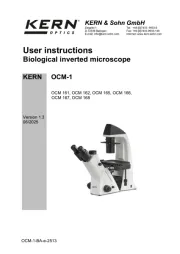
30 Juli 2025
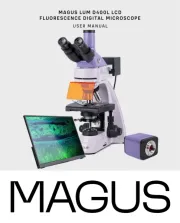
17 Juli 2025
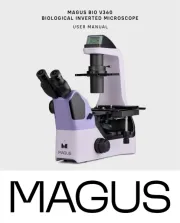
16 Juli 2025
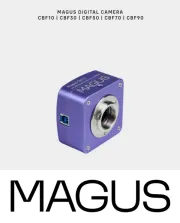
16 Juli 2025

16 Juli 2025

15 Juli 2025
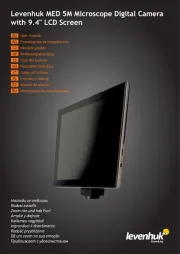
15 Juli 2025

15 Juli 2025

15 Juli 2025
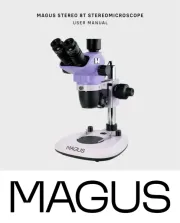
15 Juli 2025